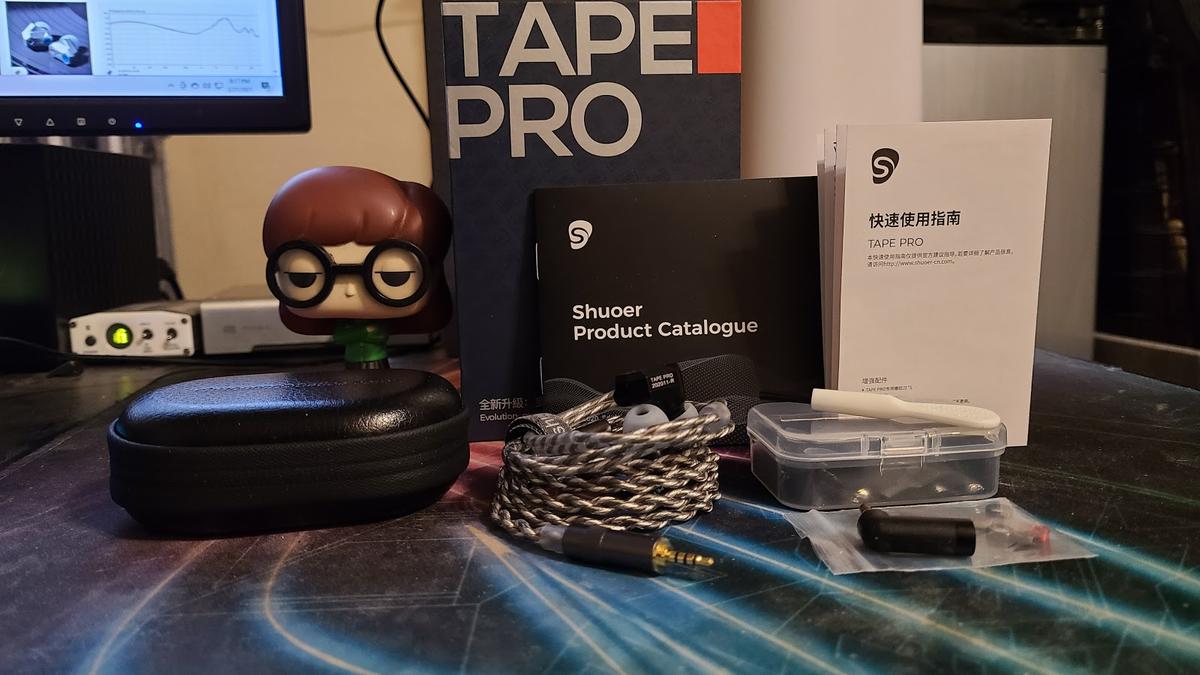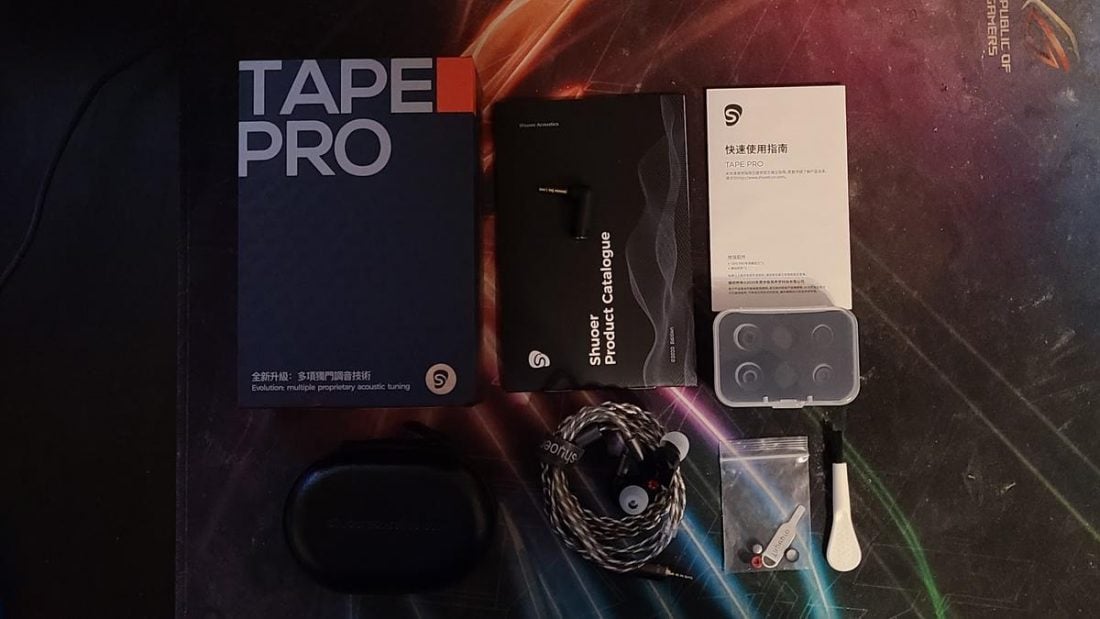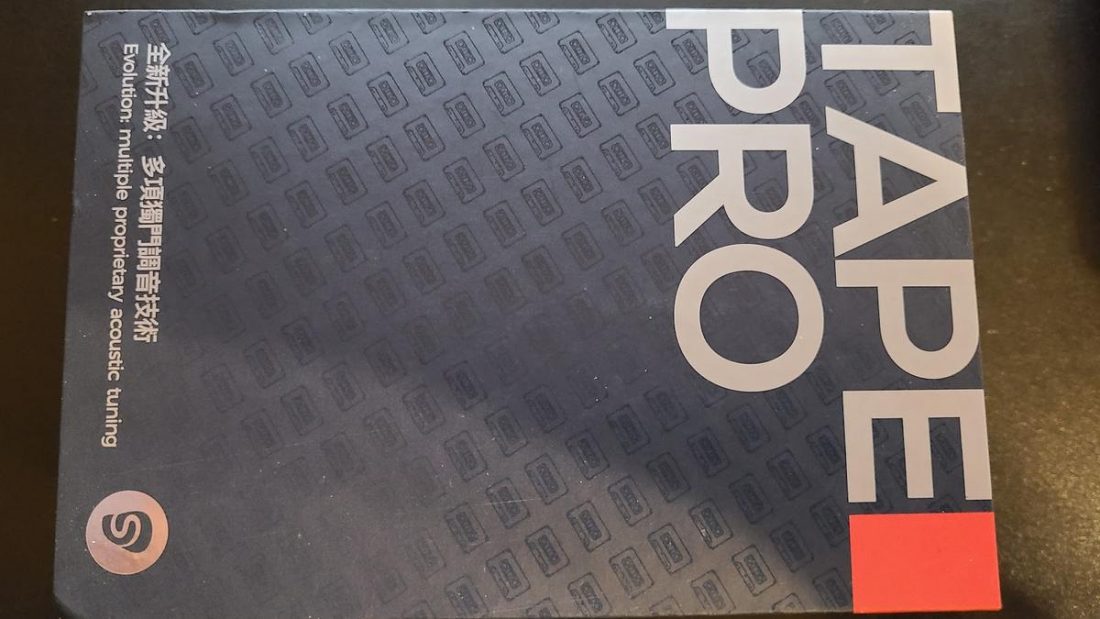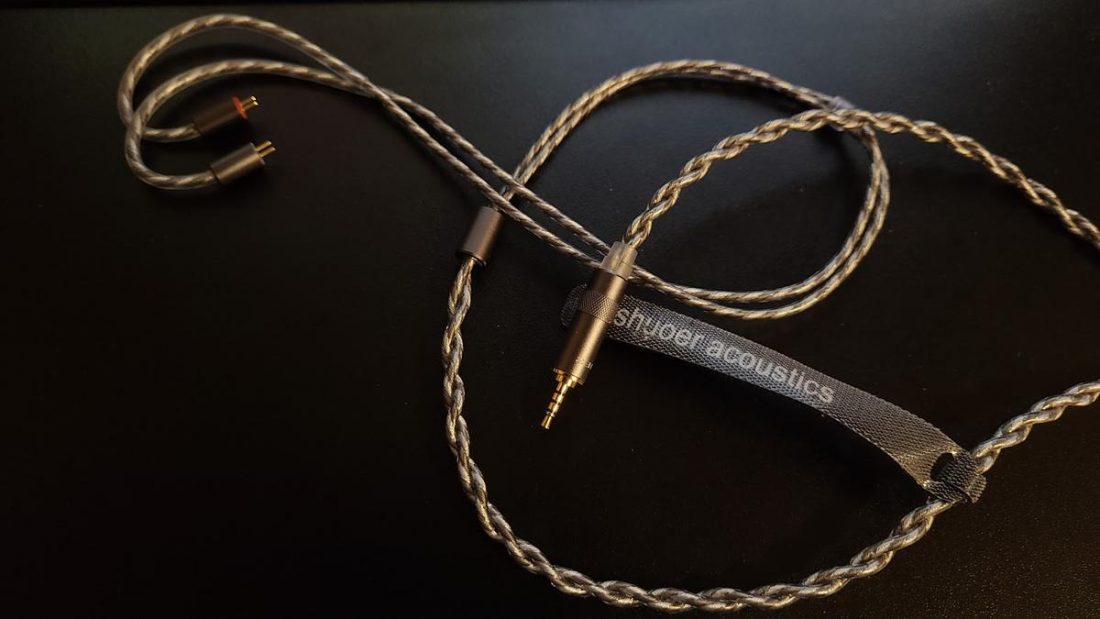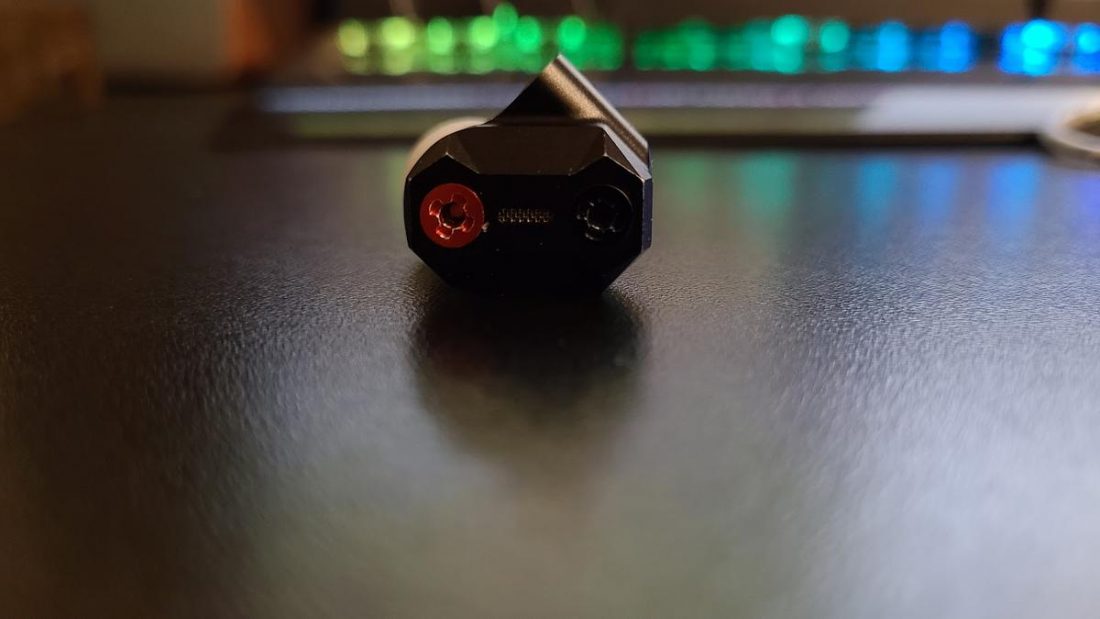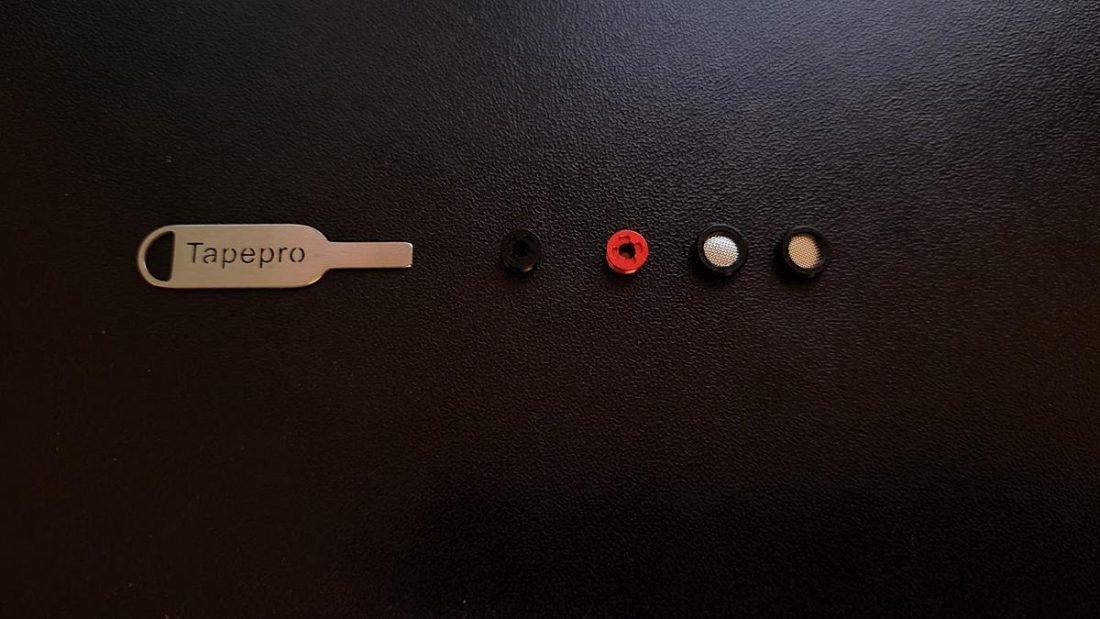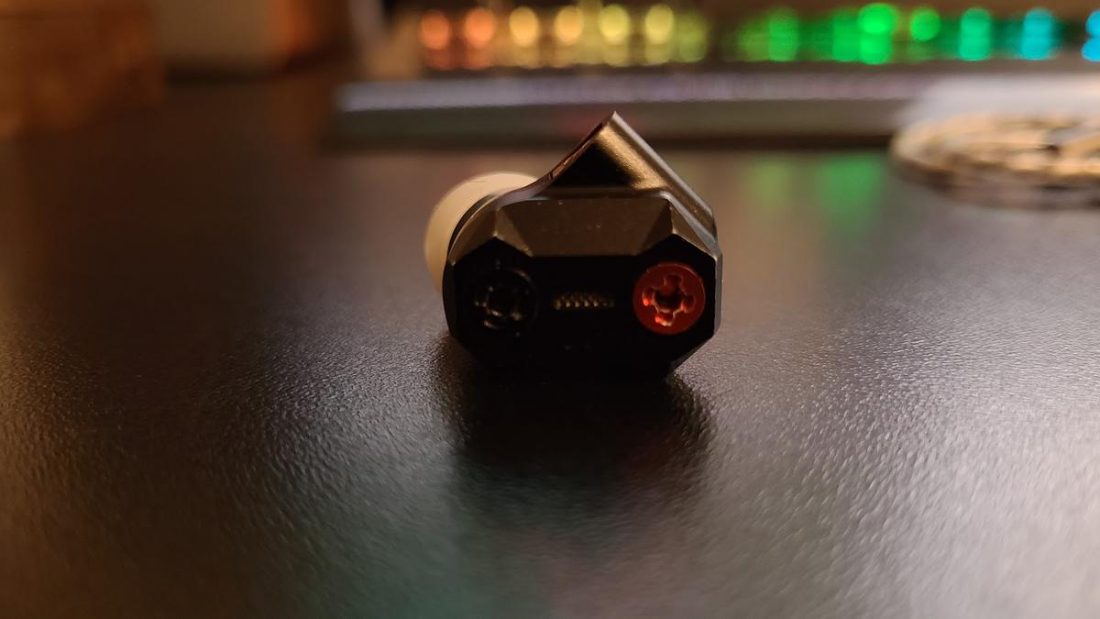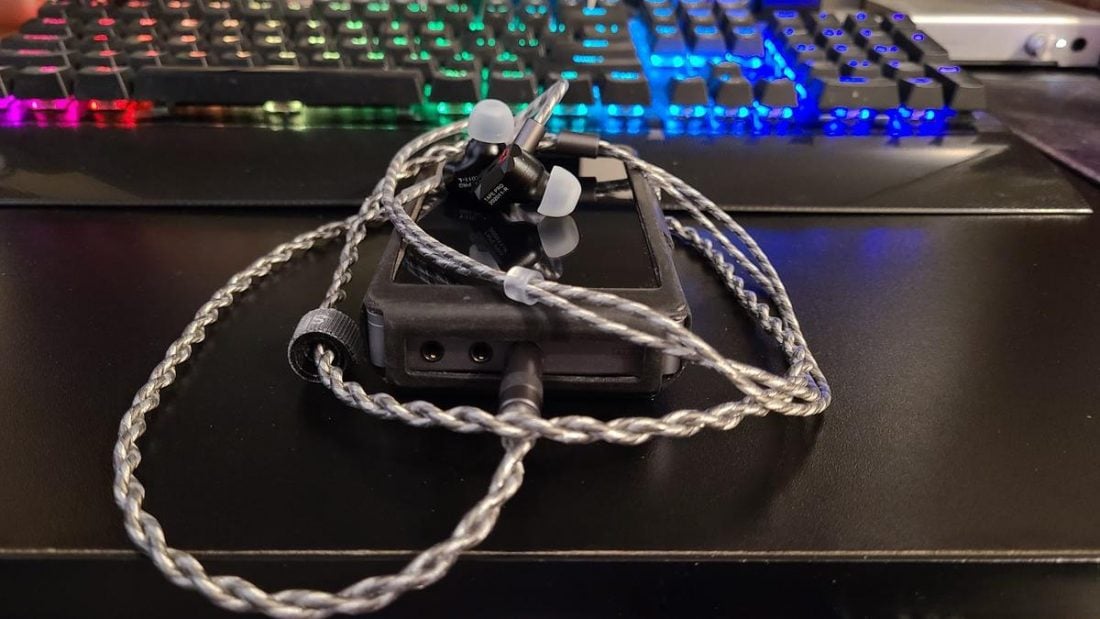The Shuoer Tape Pro are the newest iteration of the first Shuoer Tape (that was released in late summer 2019). Both the original Shuoer Tape, and now the Pro, sport a 10mm nanometer membrane dynamic driver and an electret tweeter, according to Shuoer. Today we’re going to explore my thoughts about the Tape Pro. It turns out that the original Shuoer Tape received similar observations from one of our own reviewers. Oops. I went a little ahead of myself there. We aren’t there yet, but you’ll see what I mean soon enough.
Company Overview
Shuoer was founded in Dongguan, Guangdong, in August 2016. According to their website, their objective is to extract every ounce of soul from the music by providing the best possible audio materials and accurately tweaking parameters to provide a refined tuning for a natural listening experience.
Technical Specifications
Price: USD$129 Form: IEM Drivers: 1 x 10mm nanometer membrane dynamic driver + 1 x electret tweeter Impedance (Ohm): 16 ohms Sensitivity (dB): 105dB/mW Frequency Response (Hz): 20 Hz – 30 kHz Removable Cable: Yes Source Jack: 2.5mm Cup/Shell Jack: 0.78mm dual-pin Mic: No Additional Features: Tuning system
Packaging
I love the Tape Pro’s box art because of the attention to detail. If you look closely, you can see a pattern of super small cassette tapes draping the entire box, only covered by the writing. The packaging is complete, including a catalog of Shuoer’s line of products, a 2.5mm to 3.5mm adapter, three pairs of eartips (S/M/L), a manual, two bass attenuation screws, two replaceable mesh filters, a leather case, and a cleaner for the Tape Pro. Wow! The included accessories are astounding!
In the box
Leather case x1 Neutral silicone ear tips x3 Low-frequency filters x2 Memory foam ear tips x2 2.5mm to 3.5mm adapter x1 Bass attenuation accessories x2 Mesh filters x2 Cleaner
Cable
Never have I seen a stock cable as gorgeous as the Tape Pro’s stock cable. According to Shuoer, the stock cable is composed of 368-strains silver-plated monocrystalline copper. Every time I look at it, I find myself staring at the strains in the cable for long periods of time. The strain relief above the 2.5mm plug is pretty flexible, and the plug itself is really robust. I don’t feel the need to worry about the plug’s integrity because it is composed of sturdy metal.
Design
Almost razor-sharp? Not quite. The Tape Pro’s CNC Aviation Aluminum shells seem to be sculpted to take on a cassette tape’s appearance while giving a sharp appearance. The red and black bass attenuation screws complete the look of the classic cassette tape. In between these screws is some sort of silver vent. I assume each earpiece’s vents are for the tuning system, whether the Tape Pro are set to normal tuning mode or bass boosted mode. The mesh nozzle filters are removable and replaceable.
Tuning screws
Bass tuning is accomplished with the red and black attenuation screws. Using the red screw towards the front is what I would call “normal tuning mode.” The opposite configuration, according to Shuoer, is called “Bass Boosted Mode.”
Comfort
Nothing wrong with comfort. To be honest, I was expecting a horrible and painful experience while wearing the Tape Pro because of the nozzles being slightly larger than what I’m used to. Yet, no real discomfort even with long listening sessions. Why? Well, that’s because of the stock ear tips. I used the medium-sized ear tips, and it made the seal easy and smooth.
Internals
The Tape Pro is rocking both a 10mm Dynamic Driver and one electrostatic driver, which they call a MagnetoStatic Hybrid (MSH). I am not entirely familiar with the electrostatic driver, and I have more experience with dynamic driver IEMs.
Tape Pro’s Sound
Equipment used
iBasso DX 150 DAP iBasso CA01 2.5mm to 3.5mm Adapter Tidal with HIFI quality soundtracks “Just B Friends” by Pholo, Dyzphoria (Wave), and “Mist” by Ennja (Wave) for Bass “Star Sky” by Two Steps From Hell (Epic Scores) for Mids “Black Diamond” by The Rippingtons, Russ Freeman (Modern Jazz) for Treble
Bass
With normal tuning mode, the bass response is already vibrant and a bit in-your-face. The texture is quite enjoyable. It’s smooth and pleasing to the senses. The impact can be a bit more aggressive in bass-heavy soundtracks like “Just B Friends” by Pholo and Dyzphoria. However, in bass-heavy tracks like “Mist” by Ennja, the bass doesn’t detract your attention away from the rest of the surrounding details and tones. The bass vibes nicely in the background with less crowded tracks, and the bass depth brings it all together quite nicely. The upper sub-bass is definitely heard, and the mid-bass has a slight elevation too. The bass is even more aggressive with bass boosted mode and tries to overwhelm the surrounding instruments and vocals in bass-heavy soundtracks. Thankfully the bass demonstrates a great amount of control, even in bass boosted mode. The impact goes from modest to nearly pounding, making the lower mids recessed. Thankfully, using the native 2.5mm connection provided with the stock cable can even the lower mids a bit and lift the background details more forward somewhat to remedy the aggressive characteristics of bass boosted mode.
Midrange
On normal tuning mode, the lower mids can be heard with a good amount of clarity and detail. I found it to be more than enough for Epic Score soundtracks like “Star Sky” by Two Steps From Hell. The choir in the background isn’t overwhelmed by the warmth in the atmospheric soundscape. Although the choir does sound a bit “shouty” and the same can be said for the female lead upfront. There’s a bit of soul missing from the mids, which bothers me. With bass boosted mode, it’s slightly better. Everything in “Star Sky” by Two Steps From Hell sounds somewhat less shouty and glaring, but some of the glare remains. Using the 2.5mm connection can reduce the reverberation issues a bit, but it’s not quite enough. Perhaps this is due to the lack of control from the spiky upper mids. Overall, I’m a bit disappointed about the glaring and shouty mids.
Treble
At least the glare isn’t so bad here on both normal and bass boosted modes. I took a trip down memory lane with “Black Diamond” by The Rippingtons and Russ Freeman. I heard it again, but it’s not so apparent like with the mids. The lower treble is well controlled throughout the entire track, especially during the finale, when the entire band members come together to close it out. You can hear the cymbals rise and decay nicely. Not like the mids, where the vocals linger too long and make the experience unpleasant. As for bass boosted mode, it’s slightly better. The treble is a bit tamer, and the level of brightness is turned down from a 6.5 to a 4. The rise and decay are more stable, even, and slightly shorter, which provides a more pleasing experience. Using the native 2.5mm plug provides slightly more definition and clarity, with the background instruments brought up a little more forward. The rise and decay are relatively the same.
Where to Buy
LINSOUL AMAZON
Conclusion
Even though I tried to enjoy the Tape Pro’s overall presentation, the edgy, energetic tonality kept getting in the way of enjoying busy soundtracks like “Star Sky” by Two Steps From Hell. I am hesitant to recommend the Tape Pro for USD $129. If they were around USD $99 or lower, perhaps then I could recommend them. The Tape Pro has good detail retrieval and engaging bass reproduction, but the glaring and shouty midrange disrupts the overall tonality and presentation. Otherwise, I’d say that the Tape Pro is a decent set of IEMs, with great packaging and accessories and ok sound quality.
